
Welcome to the Club of Amsterdam Journal. News aggregators (such as Yahoo! News, Google News and Drudge Report), search engines and portals have long been the leading sources of traffic for news websites. Search engines, particularly Google, have grown in importance as sources of traffic for Broadcast Media and Print category websites. Print news websites received 29.7% more traffic from Google in March 2007 than in March 2006, and Broadcast Media sites received 35.9% more traffic from Google in the same time period. […] …, search engines are now more likely to be the first step for Internet users in their search for information about breaking events. – Hitwise Given the ever increasing appeal of online video, and the need to translate this content into sales, Google-YouTube will impact every element of the industry. – Broadcasting & Cable YouTube’s growth has not begun to slow yet this year. Hitwise traffic data shows that the market share of US visits to YouTube has increased by 70% when comparing January 2007 to May 2007 (this only includes site visits, not streams or streams from views on embedded videos). In comparison, the market share of visits to a custom category of 64 other video sites increased by only 8% in that period. As of May 2007, YouTube’s market share was 50% greater than those 64 sites combined. – Hitwise “Broadband video commercials will experience their breakthrough in the coming years. This will create tremendous opportunities, but also threats, for old and new media companies. At the same time, search advertising will lose market share, which may pose a strategic challenge for Google, the Internet advertising market leader,” – Karsten Weide, program director, Digital Marketplace: New Media and Entertainment Take a look at our next Season Event the future of Google – October 25 |
Felix Bopp, editor-in-chief
Attention is the New Currency – Forget the idea of “controlling distribution”
 | by Gerd Leonhard, Music & Media Futurist Chapter I from his new book “The End of Control” |
Let’s face it: In our increasingly networked world, the vast majority of media content simply cannot be kept away from its audience. Publishers can no longer create more demand by injecting artificial scarcity — in other words, by attempting to control distribution. That’s how it used to work when media was simply a product: as a content creator, if you did not have distribution you were — literally — nowhere to be seen or heard. That is how the major record labels ended up controlling 80% of the world’s music market: they controlled distribution. And production. And promotion (via radio). And pricing. Everything.
Today, in our world of Googles, Facebooks, YouTubes, and iPhones, all content is just zeros and ones, and trying to prevent its “leakage” is simply futile. There are countless potential points of leakage in the pipeline of production, packaging, distribution, marketing, and promotion – now, Friction is Fiction, indeed!
Today, distribution (legal or not) is simply a given, and it is attention that is getting scarce. We are witnessing a complete reversal of Media 1.0, when we had plenty of available attention — after all, supply was limited — but severe limitations in distribution (e.g., shelf space, shipping, storage, radio frequencies, and TV channels).
Music, films, TV shows, radio broadcasts, books, and other content now becomes available to a global audience immediately after it is published (or quite literally, “released”) for the very first time. The nature of digital content is to flow to wherever gravity will take it, and trying to stem that tide would be like telling the ocean to stop making waves.
Today, the good old, safe and simple old way of charging by the unit (be it CDs, DVDs, a la carte downloads, or premium TV channels) feels seriously “illiquid.” Ask anyone under 25 years old and they will only snicker at the thought of buying a CD! Their capacity for media consumption is only limited by their available attention – many Digital Natives may download 10,000 songs only to actually listen to a total of 40 or 50 per month.
New Ecosystem: Media 2.0 To prosper in this new digital media economy, we must support a new ecosystem built on giving the users easy, cheap, and unfettered access to content. We need to woo the users, not barge in pitching pieces of fancy plastic or copy-protected media files. These Digital Natives are much more likely to first opt-in to a comprehensive digital service (yes, including wireless), and only then buy a physical product. Furthermore, packaged media isn’t off the table; it’s just not the first course anymore. If you don’t offer some free — or rather, feels like free — starters, they’ll eat elsewhere.
Therefore, we must create media ecosystems that will simply give the “people formerly known as consumers” (i.e. those that no longer just consume but also interact and create, themselves) the official green light to do what they would do anyway — serve themselves from this wealth of content whenever they want, wherever they are, and in whatever manner suits them. Once they have paid attention in this way (note the word “paid”), a content creator or media provider can harvest a myriad of opportunities. The tollbooth has moved up the road a bit but this is now a trusted and reliable road that will inevitably lead to the monetization point. Put the tollbooth too early and 95% of digital travelers will turn around and look for other ways to get there!
In its most basic form, this challenging new economy of “selling attention” will require a highly intelligent yet easy and efficient flat-rate system. The goal is to get most users to accept — or rather, expect — these payments as something akin to a totally acceptable “toll” (but not tax!) to enter this superhighway of media and entertainment. This is similar to how Americans have accepted bridge tolls as a fact of life a long time ago, or how most Europeans have accepted their obligatory payments of public TV and Radio license fees. Having said that, I think this toll will be so well hidden, dressed-up, and bundled that it will feel no different from today’s practice of accepting software licenses with a quick click on the checkbox — but more on that later.
The clinching argument for a full embrace of the principles of the Attention Economy in Media is that most of us are much more likely to quickly explore new content — and, provided that it’s great content, engage with it — if we can get it on our “already subscribed for” digital networks, portals, or communities. Of course this kind of build-in engagement then creates the network effects that every media company wants to tap into, as well. For example, if Facebook could offer music based on a flat-fee-per-user license that can easily be wrapped into other offerings and therefore be more or less invisible to us, then all of us Facebook users will be simply a click away from trying new music in a comfortable, trusted and fully ‘shareable’ environment.
This dramatic lowering of the exploration threshold (which is not to be confused with a flat-out commoditization of content – more on that later) is absolutely critical to the Media 2.0 ecosystem. That’s because creating hundreds of millions of explorers of new content is the indisputable starting point for all new content commerce, and only a flat-fee system that covers every user on any network allows us to achieve this kind of liquidity. Beyond that, rest assured people will still buy the plastic or a la carte digital offerings. Exposure drives attention drives revenues!
What’s more — and this is very important for a unilateral adoption of any flat-fee system — the uniformly accepted flat fees will, in fact, be paid on our behalf in the not-too-distant future. Why? Because every telco, every operator, every online portal, every social network wants attention in order to monetize their other offerings, and good content is guaranteed to get that.
As soon as the incumbent rights holders are woken up from their blissfully disconnected hibernation and finally get around to providing the required licenses, snagging a loyal and appreciative customer for a low monthly fee that also covers his basic use of music (and media!) content will simply become a customer acquisition expense and ad-supported feature. This is a dream come true for the media purveyors of the future — search engines, advertising networks, digital network operators — as well as for many hardware and software companies.
Just imagine a next-generation iPod-like device with built-in access to “feels-like-free” music services, video clips, or movies; or a PSP with built-in, auto-updated game and TV clip subscriptions; or a Nokia phone with hundreds of recordable digital radio channels. That would create true liquidity and generate mass-market audiences (not to mention a huge pipeline of up-selling opportunities). And it would immediately be apparent that “feels like free” services would be just the very beginning of media consumption, not the final destination (as a good many of today’s still seriously disconnected media executives are fearing): the very tip of the iceberg of the users’ lust for content.
So why exactly will so-called ‘Big Media’ license its content to such a device or service? The answer is simple: because we, as the newly recognized and seemingly omnipotent users, are worth a lot more as active users than we are as inactive bystanders, to any and all players in this ecosystem. Our attention is their lunch. And at the same time, our inattention nukes their quest for control. Our clicks have brought The End of Control — and media providers urgently need another way of getting into our wallets.
What’s more, as active participants those Net Generation users create mountains of user data, product feedback, and marketing information, and that creates many new advertising opportunities, as well. We click and therefore the providers of media are able to know what goes on in the network. What’s more, we even contribute our own content, be it as prosumers and amateur producers, remixers, commentators, playlisters, or just as “supernodes of recommendation” or active netizens. In many instances, we — the users — actually are the content – note the success of MySpace, eBay, Wikipedia, etc.
The rise of the Attention Economy in media does not just bring about The End of Control, it also brings light to what I like to call the twilight zone of content: those very large catalogs of music, films, TV shows, and books that have been out of distribution or out of print for a long time, and that languish in the archives as if they’d never been created in the first place. What better revival of their work can any content creator hope for? Soon, they will finally be able to harvest substantial and recurring revenues via these flat-fee subscriptions (be they voluntary or built-in via public levies), in addition to the revenues flowing from integrated, intelligent, and highly customized advertising formats.
Welcome to Media2.0 and the End of Control.
Next Event
the future of Google
and its impact on Media and Entertainment
Thursday, October 25, 2007
Registration: 18:30-19:00, Conference: 19:00-21:15
Where: Info.nl, Sint Antoniesbreestraat 16, 1011 HB Amsterdam [Next to Nieuwmarkt]
The conference language is English.
The speakers are
Nils Rooijmans, Head of Search and R&D, ilse media
Search Culture
Mario de Vries, Business Consultant, Triple P
“Any resemblance with real life is purely coincidal”
Rocco van den Berg, Head of Business Development & Licensing, Endemol The Netherlands
The increase of serious video channels
Arjen Kamphuis, Futurist, Owner, KMPHS
Futureshock – Dealing with rapid and fundamental change
Moderated by Simon Jones, University of Amsterdam
Club of Amsterdam blog
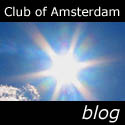 | Club of Amsterdam blog http://clubofamsterdam.blogspot.com November 8: Sexuality in the 21st Century? September 6: Are chimeras part of our future? September 1 : Importance of Multiculturalism Expertise, and a Program to Acquire It September 1 : Four Planets |
News about the Future

Canadian Entrepreneur, Peter Sandler, President of Therapy Products and Inventor of the E-V Sunny Bicycle developed the first all Solar electric bicycle driven completely from power derived from the Sun’s Rays.
The E-V Sunny Bicycle has light absorbing Solar panels built right into the Wheels, creating continual power from the Sun’s Rays, and maintaining a constant charge to the batteries. The bike is propelled by a 500 watt front hub motor.
The variable speed electronic controller drives the bike to speeds of up to 30 kilometers per hour. Overall weight of the bicycle is 75 lbs. and comes with 17 amp hr. batteries and a built in battery charger.

2007 Global Venture Capital Survey
by Deloitte & Touche LLP
This year’s survey clearly shows that global venture capital investment continues to move forward, even if the movement is incremental. VCs are being cautious as they enter new territory, both in terms of the percentage of assets managed that they allocate to foreign investment and the number of deals. Since different countries and regions present their own unique challenges, more experience in working through a deal, plus more experience on the ground through local partnerships, may well give foreign investors greater confidence as time goes by. But, it also makes them recognize how much – both financially and operationally – is involved in investing overseas.
The survey also shows that, both domestically and around the world, the U.S. remains the nexus of entrepreneurial activity and talent. But responses to the survey indicate that around the world entrepreneurship is not only burgeoning, but that the ideas and talent in regions far from home are attracting foreign investment. […]
“Clearly, U.S. venture capital today and in the near future will retain its eminence, but VCs will need to make the necessary adaptations fundamental to succeeding in a global market. As venture capitalists develop global networks and gain more experience and successes outside their home country, comfort levels and investment levels will likely continue to increase”, Jensen concluded.
wearIT@work
wearIT@work was set up by the European Commission as an Integrated Project to investigate “Wearable Computing” as a technology dealing with computer systems integrated in clothing.
The following advantages are expected: First of all an improved productivity and flexibility of workers shall be reached. Second an increased safety at work and a decreased pressure towards automation is aimed. All this will allow a simplified access to enterprise information and lead to faster group decisions. Furthermore new information technology products will be introduced into the market based on the pilot applications developed within wearIT@work.
Wearable computing facilitates a new form of human–computer interaction comprising a small body–worn computer (e.g. user–programmable device) that is always on and always ready and accessible. In this regard, the new computational framework differs from that of hand held devices, laptop computers and personal digital assistants (PDAs). The “always ready” capability leads to a new form of synergy between human and computer, characterized by long-term adaptation through constancy of user–interface.
Prof. Steve Mann, University of Toronto, 1998:
Wearable computing is a kind of “extension” of your body that allows you to perform “extraordinary” tasks. Something that you never could do using only your body.
It is like becoming a “super-hero”: you can be in more than one place at the same time…
Wearable computing researchers have discovered ubiquity!
The extension idea is useful for understanding the real implications of wearables in work contexts. A wearable computer is an extension but a superlative one. For example, it can be an otherwise ordinary piece of clothing but with integrated communication functions. And what would this be useful for? Well, safety at work could be improved by allowing us to communicate our position immediately in case of problems or danger. This is a vital function if you are a fire-man or other rescue worker putting your life on the line every day. Productivity could be improved by allowing the factory worker easy access to distant information sources almost immediately, thereby allowing him to solve problems on the spot and save time.
These are just two examples of the ways wearable computing can make the workplace safer, more comfortable, and more productive. Many more workplace applications are waiting to be developed.
Business Cases
Emergency Rescue
The wearIT@work solutions for the domain of emergency response aim at providing the following benefits:
- Reducing the risks for emergency forces through timely and adequate information services and consequently better informed operations
- Faster and richer acquisition and communication of information
- More robust communication and awareness
- Faster interventions leading to higher rescue performance and reduced material loss
- Optimization of resource usage and consequently cost reduction
- Improving the capacity of fire-fighters to assess their situation, bodily condition and surrounding team members
- Enhanced monitoring and control of interventions
- Support for automatic or semi-automatic reporting
- Facilitating post-intervention debriefings and analysis
Healthcare
Physicians and nurses equipped with wearable devices and adequate software systems will have access to all available patient information at any time and any place in the hospital. This would:
- Enable the mobility of medical stuff;
- Provide on-time access to needed information through connections to the clinical server. Added audio and visual functions would increase the usability of the documentation;
- Context sensitivity will improve the quality of the information and prevent patient mix-up.
- Insure consultation with remotely located medical experts in critical situations;
- Increase the quality of communication through audio-visual support.
- The wearable computer will be furnished with suitable and non-obstructive input devices (e.g. speech recognition) and displays (for example a see-through head-up display or a flexible screen display which can be fixed at the coat of the physician or nurse).
Mobile Maintenance
The maintenance operators will be equipped with a Maintenance Jacket, with integrated wearable technologies in it. This complex and innovative device would improve the above scenarios in the following ways:
- Enabling operator’s mobility and free-hand working;
- Supporting advanced content and knowledge management functionalities;
- Providing on-the-job access to needed information through connections to the documentation server. Added audio and visual functions would increase the usability of the documentation;
- Integration with available information systems to check the availability of tools and materials, to verify the ranges of important task-dependent measurements, to give access to trouble-shooting data bases and on-board systems;
- Automatically adapting all the information provided to the operator to both the current task and the user profile, in order to obtain a personalized support;
- Generating automatic reports and sheets and distributing them to experts and team members;
- Increasing the quality of communication amongst team members and with remote experts through audio-visual support;
- Providing for simultaneous decision support in critical situations;
- Enhancing work quality by adaptive advice in critical phases;
- Adapting to the context (environmental parameters, on-site measurements through suitable tools, etc.) in which the operator is working;
- Facilitating the maintainers movements within the job field and the collaboration through user location and navigation functionalities;
- Facilitating the operator-system interaction thanks to innovative, multimodal, interface.
Production
The maintenance operators will be equipped with a Maintenance Jacket, with integrated wearable technologies in The production staff (workers, technicians and managers) will be provided with During the WearIT@work project, with adequate, easy-to-use mobile clients (PDAs, WebPads, Wearable PC etc.) to allow a real-time, context sensitive information access at each location in the enterprise (office & shopfloor) via wireless communication technology (WLAN etc.).
The information presentation on the mobile client will be easy to understand for all types of users and will improve the workers capabilities with the mobile provision.
For Plant Managers of:
- fault position;
- responsible person;
- estimated repair time;
- costs caused by standstill.
For the Service Technicians of:
- identification of broken components;
- bill of materials/ maintenance procedure;
- depot availability of spare parts;
- repair manuals/ CAD drawings;
- tele-conferencing facilities with specialists;
- fault documentation.
For the assembly worker of:
- display of assembly simulations on mobile device;
- email-based audio commentaries from assembly workers to designers
Recommended Book
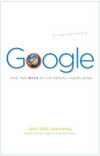
Google and the Myth of Universal Knowledge: A View from Europe
by Jean-Noel Jeanneney
The recent announcement that Google will digitize the holdings of several major libraries sent shock waves through the book industry and academe. Google presented this digital repository as a first step towards a long-dreamed-of universal library, but skeptics were quick to raise a number of concerns about the potential for copyright infringement and unanticipated effects on the business of research and publishing.
Jean-Noël Jeanneney, president of France’s Bibliothèque Nationale, here takes aim at what he sees as a far more troubling aspect of Google’s Library Project: its potential to misrepresent – and even damage – the world’s cultural heritage. In this impassioned work, Jeanneney argues that Google’s unsystematic digitization of books from a few partner libraries and its reliance on works written mostly in English constitute acts of selection that can only extend the dominance of American culture abroad. This danger is made evident by a Google book search the author discusses here – one run on Hugo, Cervantes, Dante, and Goethe that resulted in just one non-English edition, and a German translation of Hugo at that. An archive that can so easily slight the masters of European literature – and whose development is driven by commercial interests – cannot provide the foundation for a universal library.
As a leading librarian, Jeanneney remains enthusiastic about the archival potential of the Web. But he argues that the short-term thinking characterized by Google’s digital repository must be countered by long-term planning on the part of cultural and governmental institutions worldwide – a serious effort to create a truly comprehensive library, one based on the politics of inclusion and multiculturalism.
Biodiversity Institute of Ontario
Biodiversity measures the variation of life shaped through ecology and evolution from genes to species and ecosystems. Genetic variation plays a critical role in the ability of individuals and species to respond and adapt to environmental change while the diversity of species within and between ecosystems provides significant advantages to ecosystem function and resilience. One of the ironies of biological research is that after more than 250 years of dedicated biological science, the total number of species within any country or region remains unknown. While we often have a good idea of the identities and ecological roles of the larger, more charismatic animals (birds, mammals) the truth of the matter is that most of life is small (insects, bacteria, fungi) and currently undescribed. Shedding light onto these lesser known groups is important because all of the larger groups, including ourselves, depend on these smaller organisms for some part of their daily natural history.
Within Canada, Ontario is the most biodiverse province and although most of the northern part of the province is remains directly untouched by anthropogenic change – the ecosystems of the southern regions of the province are under enormous development pressures. It is these same southern regions that provide the habitat for nearly 40% of Canada’s endangered species. In order to answer questions of species identity, genetic variation, ecological roles and ecosystem processes requires a novel, multi-disciplinary approach. The diverse elements of such an approach are now fostered at the Biodiversity Institute of Ontario (BIO).
Some activities

The BIO OAC Herbarium is dedicated to plant barcoding research. The team of researchers, staff and students are focused on barcoding the Flora of Ontario, tropical taxa and cryptic taxa (hepatics, mosses, lichens) or plant material (e.g., roots). Many of our projects are investigating the application of barcoding in ecological and ethnobotanical research. The Herbarium is responsible for handling voucher specimens, DNA samples and the accession of plant barcodes into BOLD for the Canadian Plant Barcoding Working Group (CPBWG).

The experimental ecosystems unit oversees a unique controlled environment facility – the Limnotron – which is the world’s largest aquatic mesocosm facility. The facility is exploring the impacts of biological diversity on ecosystem processes.There is increasing evidence that we are now involved in a global biodiversity crisis. Species are being lost at unprecedented rates, and there is little doubt that this is due in part to the human footprint on the earth’s landscape. Some 12% of all bird species, 23% of mammals, 25% of conifers, 32% of amphibians and 52% of cycads are threatened with extinction, and the delayed effects of climate change may yet further inflate these numbers (Loreau et al. 2006). In the face of such change, an obvious response is to begin to catalogue the earth’s diversity (Canadian Barcode of Life Network). Although this is of critical importance it is also extremely important to understand what the loss of diversity means for the biological structure and function of ecosystems. The
Limnotron facility seeks to address this aspect of the biodiversity crisis.In collaboration with a team of researchers, this research program is beginning to detail biological structures from both pristine and impacted aquatic ecosystems. Remarkably, empirical generalities in the biological structure of pristine and impacted ecosystems have begun to emerge (Rooney et al. 2006). This is where the Limnotron comes in. The Limnotron facility has been designed to allow us to reproduce certain ubiquitous structures in aquatic ecosystems (e.g., water colum stratification, sediment-water interface etc.). As such, the Limnotron is capable of creating small aquatic ecosystems that can mimic the biological structure found in lakes. Further, the controlled and replicated Limnotron environment allows us to experimentally identify how specific biological structures maintain the sustainability of ecosystem functions. In essence, the Limnotron promises to allow us to move beyond cataloguing species and begin to catalogue the functional implications of biological structure — an under-explored but critical aspect of the global biodiversity crisis.

The University of Guelph Insect Collection had its roots in the insect collection of the Entomological Society of Ontario, founded in 1863. It is the oldest insect collection in Canada and was, in effect, Canada’s national insect collection before there was a Canada and before the establishment of the Canadian National Collection in Ottawa. Although our current collection of just over 1.5 million specimens is relatively small by world standards, the University of Guelph Insect Collection remains one of North America’s most importanct heritage insect collections, and is Canada’s third or fourth largest insect collection. It is the best collection of Ontario insects, including many irreplaceable specimens of extirpated species.
Budapest at Het Ij
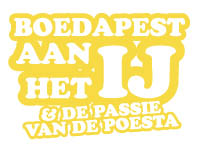
De Passie van de Poesta
Zondag, 14 oktober, wordt in de Amsterdamse Schreierstoren een Hongaars wijnfestival met verrassende wijnen gehouden. De Schreierstoren is een prachtig middeleeuws gebouw in het hartje van Amsterdam t/o het Centraal Station.
In het VOC café staat v.a. 13:00 De Bubbelbar voor u klaar met de Bubbels van Budapest. In de Herenkamer is een buffet van de fameuze Hongaarse top chef Lajos Takács met fraaie schotels. Beneden kunt u ruim vijftig Hongaarse wijnen proeven. Hier kunt u ook kennismaken met vele soorten onweerstaanbare Hongaarse worsten en delicatessen.
Het Hongaarse trio SIRASO speelt een mix van Hongaarse en westerse muziek, aansluitend ( 20:00 uur tot 23:00 uur) draait de beroemde Hongaarse DJ. Lecsó.
Om 20:00uur wordt het 1e Nederlandse kampioenschap Hongaars tafeldansen gehouden. (voorronde Nat. Kampioenschappen).
Kaarten a 10,- kunnen besteld worden via info@4-trading.com
Hiervoor ontvangt U een eigen glas en 9 bonnen t.w.v. 6,-
www.schreierstoren.nl
http://4-trading.com
Agenda

| The Season Events are on Thursdays Registration: 18:30-19:00, Conference: 19:00-21:15 | ||
| October 25 18:30 – 21:15 | the future of Google and its impact on Media & Entertainment Location: Info.nl, Sint Antoniesbreestraat 16, 1011 HB Amsterdam [Next to Nieuwmarkt] | |
| November 29 18:30 – 21:15 | the future of Sexuality Location: Waag Society, Nieuwmarkt 4, 1012 CR Amsterdam [Center of Nieuwmarkt] | |
| January 31 18:30 – 21:15 | the future of Fashion Location: | |
| February 28 18:30 – 21:15 | the future of NanoEnergy Location: | |
| March 27 18:30 – 21:15 | the future of Ecological Architecture Location: Rotterdam | |
| April 24 18:30 – 21:15 | the future of Money Location: | |
| May 29 18:30 – 21:15 | the future of Children Location: Info.nl, Sint Antoniesbreestraat 16, 1011 HB Amsterdam [Next to Nieuwmarkt] | |
| June 26 18:30 – | Taste of Diversity – the future of INDIA Location: 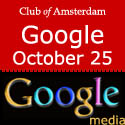 |
Club of Amsterdam Open Business Club
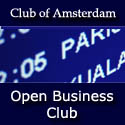 | Club of Amsterdam Open Business Club Are you interested in networking, sharing visions, ideas about your future, the future of your industry, society, discussing issues, which are relevant for yourself as well as for the ‘global’ community? The future starts now – join our online platform … |



Customer Reviews
Thanks for submitting your comment!